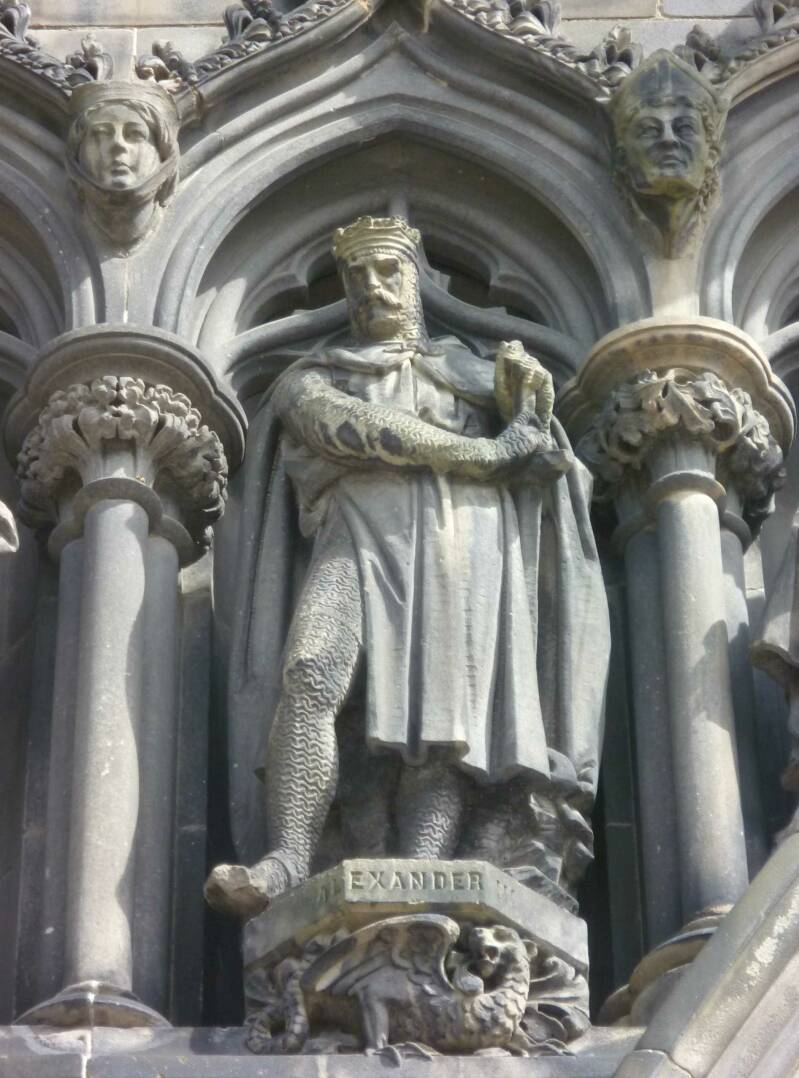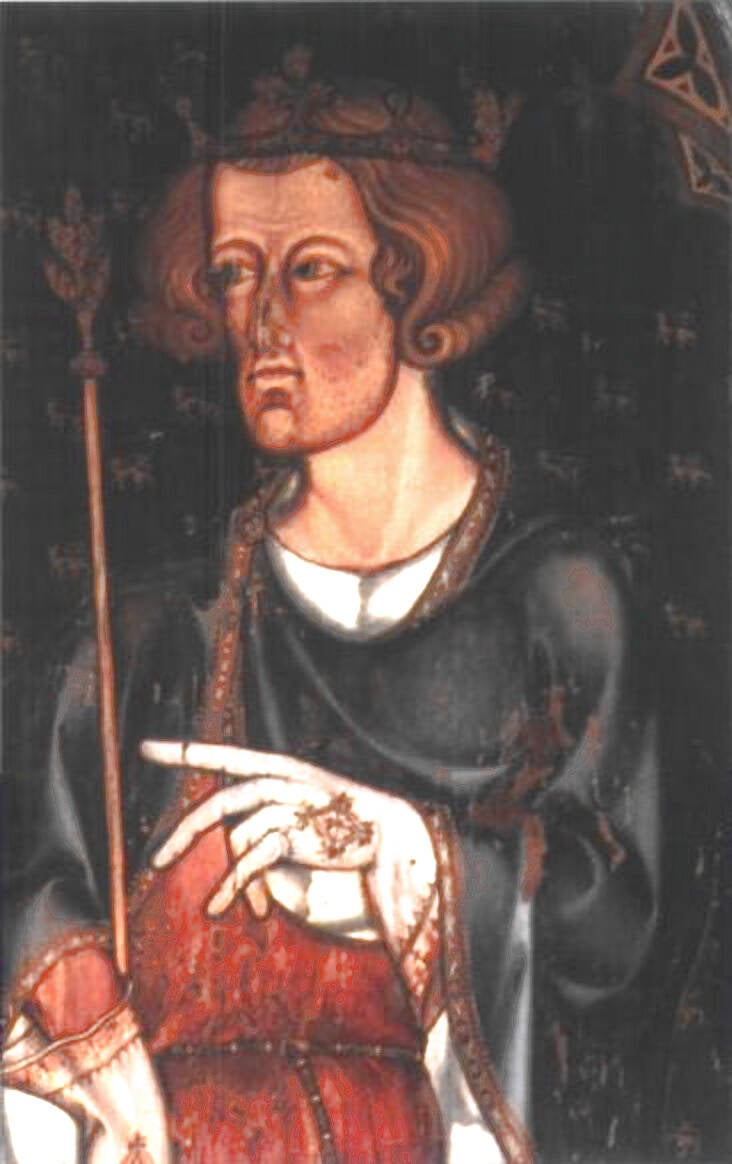The Scottish Wars of Independence
The First War of Independence
What went before (in very broad strokes): When Alexander II, the King of Scots, died in 1249, his son, another Alexander, was only eight years old and Scotland was at the mercy of rival factions. This rivalry was so intense that at one point the infant king was even kidnapped in an attempt to force a power-sharing arrangement.
In 1251 the still very young Alexander was married to Margaret, the daughter of King Henry III of England and, although Henry attempted to force the young king to recognise him as overlord of Scotland (look for the Treaty of Falaise), Alexander refused. Finally in 1262 Alexander, at the age of 21, took direct control of his kingdom and set to work where his father had left off. He was to be one of the best kings Scotland ever had!
The King’s marriage to Margaret resulted in three children, but by 1283 all had died leaving Alexander without a direct heir.
The eldest child, another Margaret had married Eirik II of Norway and had produced a girl also called Margaret and, as the king had no brothers or uncles to succeed him, this little Margaret was quite important.
In February of 1275, the Queen of Scots fell ill while visiting Fife and died on February 26 in Cupar Castle. Alexander had her buried in the Abbey of Dunfermline. She was just thirty four years old and had been queen for twenty-three years.
In 1285, Alexander married again. This time to Yolande de Dreux – a member of a powerful French family.
One evening in 1286 he set off on horseback from Edinburgh Castle to be with his new queen in Fife. In bad weather the king and his party rode through the night. At some stage Alexander however was separated from the others and went missing. His horse appears to have lost its footing and fallen down an embankment. The king’s body, with his neck broken, was found on the beach the next day, just a mile from where his wife was staying, at Kinghorn in Fife. Life can be so strange.......
With the new queen pregnant six guardians were appointed to rule the kingdom until the arrival of Alexander’s posthumous heir. However, Yolande either miscarried, or the baby was still-born and by the end of the year it was clear that Scotland had to look elsewhere for a ruler.
Margaret, the 'Maid of Norway', was now the incumbent ruler of Scotland.
Margaret set sail from Norway in September 1290, accompanied, among others, by Bishop Narve of Bergen. The ship was bound for Leith, but storms drove the Maid’s ship off course and she landed at Orkney. Scottish and English representatives in haste rode north to Orkney to meet her there, but during an overnight stay at Skelbo Castle, news came that Margaret had inexplicably succumbed at Orkney, in the arms of the Bishop, supposedly (!) from the effects of a severe bout of seasickness. The wee lass was only 7 years old.
Who would now be King of Scots? Some nobles believed they should be the next ruler of Scotland and two of the most notable claimants (there were 13 in all) were John Balliol and one Robert Bruce (!)
The Guardians of Scotland in exasperation turned to the King of England, Edward I for help.
Wily Edward however, also claiming ‘overlordship’, demanded full acknowledgement of his feudal sovereignty before proceeding and after long deliberations, the claimants acceded. Edward, after having interviewed all the would-be kings, chose John de Baliol, a rather weak spirited and malleable personality. This new King of Scots would be fully answerable to Edward and it might certainly be argued that here the seeds were sown for the coming years of blood and strive.
One of the claimants had been Robert the Bruce, the grandfather of the future king Robert I The Bruce and he was livid!
When Edward some time later demanded Scottish troops against the French, Baliol straightened his spine and courageously rebelled. He even launched an unsuccessful attack on Carlisle and on top of that entered into the ‘Auld Alliance’ with France.
Edward felt betrayed in his trust and, in order to set things right once and for all, crossed the border in 1296 with a massive army. Here, officially, start the Wars of Independence.
The siege and massacre of Berwick was Edward's opening shot of the campaign. Berwick, just north of the border, was Scotland's most important trading port, second only to London and Bristol in economic importance in medieval Britain at that point. Berwick was, if not the most, one of the most populated towns in Scotland.
The English took the castle, whereupon the defenders surrendered and were spared. The population of the town however bore the brunt of Edward's wrath!
Edward spared no one, whatever the age or sex, and for two days streams of blood flowed from the bodies of the slain. The English King ordered 7,500 souls of both sexes to be massacred, so that "mills could be turned by the flow of their blood".
A very thorough and detailed article "Historical Background" on the Wars of Independence can be found at: Historic Environment Scotland
Underneath, in chronological order, the battles, skirmishes and other major events that followed in the aftermath of the massacre at Berwick:
1297 Action at Lanark
Not much is definitely known about this incident. It seems that a riot broke out at a court being held by the sheriff of Lanark, William Heselrig. One of those present was a minor knight William Wallace. It is not clear how exactly Wallace was involved but he managed to get away with help from a girl who may have been his wife. Later he came back with some supporters and attacked and killed Heselrig.
1304 Skirmish of Happrew
Twelve months after the slaughter at Roslin, a strong English force was sent against the Scottish rebels. At Happrew, just west of Peebles, they defeated Sir William Wallace and Sir Simon Fraser. Wallace escaped but was captured and executed a year later. Fraser was captured in 1306 at Kirkincliffe, transported to London and died a horrible death..
1304 Siege of Stirling Castle
Stirling Castle was the last stronghold of resistance to English rule. The English, armed with 12 siege engines, laid siege to the castle in April 1304. For four months the castle was bombarded by lead balls (stripped from nearby church roofs), Greek fire and stone balls.
Impatient with the lack of progress, Edward ordered his chief engineer to begin work on a new, more massive trebuchet called Warwolf. The castle's garrison of 30, led by William Oliphant, eventually were allowed to surrender on 24 July after Edward had previously refused to accept surrender until his new toy the Warwolf had been tested.
Despite previous threats, Edward, magnamaniously, pardoned all the Scots in the garrison, although William Oliphant was taken prisoner and taken to London.
1307 Battle of Turnberry (coming!)
1307 Battle of Loch Ryan (coming!)
1308 Harrying of Buchan (coming!)
In 1320, the Declaration of Arbroath was sent by a group of Scottish nobles to the Pope affirming Scottish independence from England. Two similar declarations were also sent by the nobles, clergy and Robert I himself. In 1324, in order to speed things up, Thomas Randolph, Earl of Moray was sent to meet the Pope in person at his court in Avignon. Randolph successfully persuaded Pope John to recognise Robert as King of Scots, a major diplomatic coup. In 1327, Edward II of England was deposed and killed and his son Edward III assumed the throne. Repeated invasions of the north of England by Robert or his war leaders, culminating in the Battle of Stanhope Park, in which the English king was nearly captured, forced Edward III to sign the Treaty of Edinburgh–Northampton on 1 May 1328. This treaty recognised the independence of Scotland and Robert the Bruce as King. To further seal the peace, Robert's son and heir David married the sister of Edward III. It would take another 20 years of war however before the dust really settled, but that is a story for another time.



